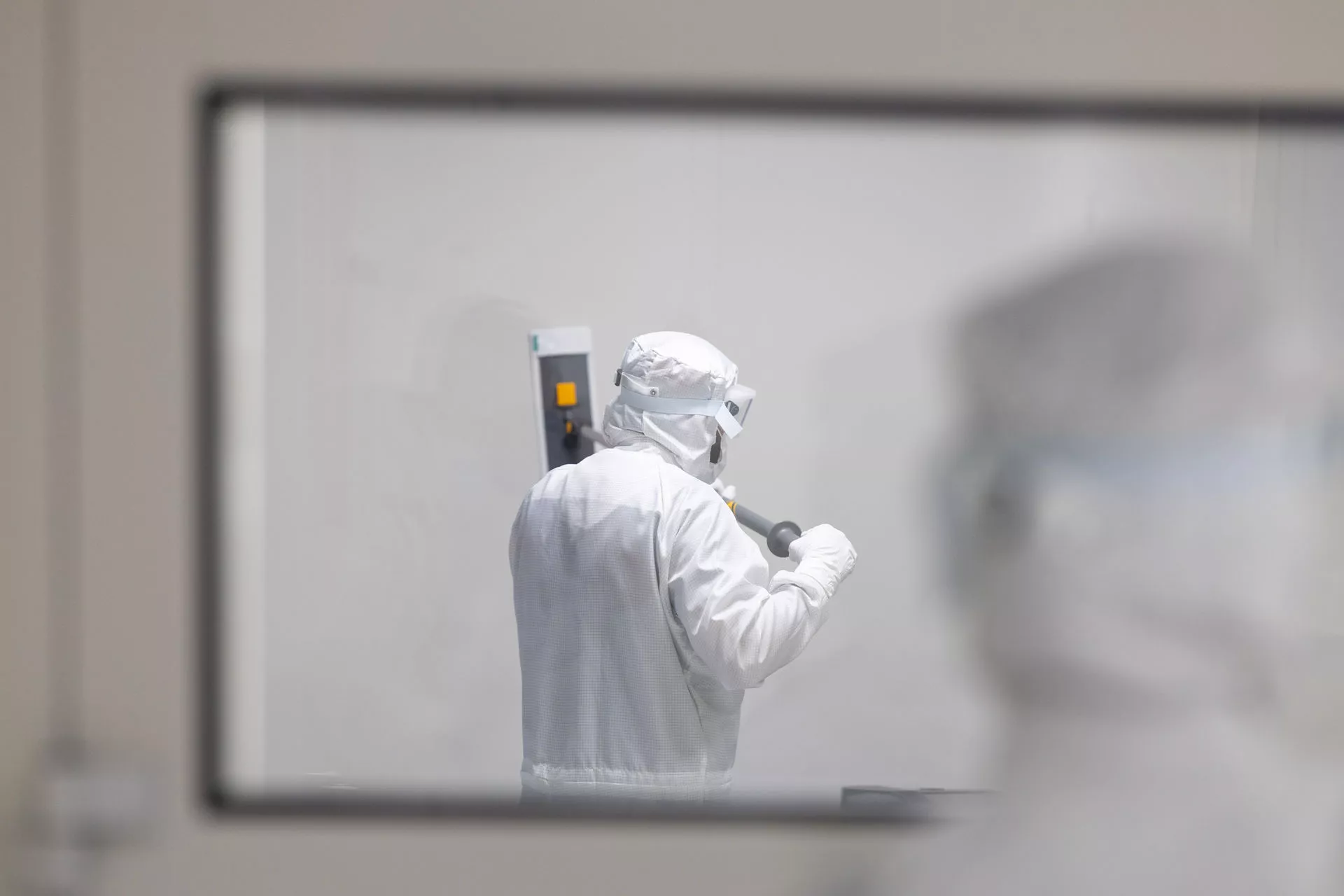Precision cleaning and disinfection for an impeccable cleanroom
Cleanrooms are designed to enhance and safeguard the quality of your products. Having a cleanroom is one thing, having a contamination-free cleanroom is something else entirely!

There are three main factors that can compromise the sterility of a cleanroom:
- Environment (5%): such as poor or interrupted separation from the outside environment
- Production process (15%): such as production equipment and packaging
- Staff (80%): people pose the biggest threat to cleanrooms by introducing potential contaminants such as skin flakes, microbes and yeasts
To minimize these risks, it’s crucial to have an efficient cleaning and disinfection protocol. Roughly 80% of particles larger than 25 µm are not removed through ventilation but require actual cleaning.
Instead of regarding cleaning as just another unavoidable expense, you can see it as a value-added process by keeping these three criteria in mind:
- Understanding the difference between cleaning and disinfection:
- Cleaning and disinfection are two entirely different processes. Cleaning always happens before disinfection.
- Cleaning agents are used to remove dirt, dust and grease from surfaces before disinfectants are applied. If there is any residue left on the surface, the disinfection step will be less effective.
- Cleaning agents should be neutral, non-foaming, and compatible with the disinfectants to prevent deactivation.
- Knowing your disinfectants:
- Specific disinfectants are designed for specific purposes. It’s important to understand the difference between sporicidal and non-sporicidal disinfectants, for example.
- Environmental data can help you choose the right disinfectants and ensure that both viable and non-viable contaminants are removed.
- Using the right cleaning techniques:
- Using the right cleaning and disinfection techniques is crucial. If cleaning agents or disinfectants are not used correctly, certain areas may not be cleaned properly.
- Documented protocols and standard operating procedures (SOPs) must be followed, including specific steps such as mopping floors/wiping surfaces with a neutral cleaning agent, ensuring the surface is dry, mopping floors/wiping surfaces with a disinfectant, keeping the surface wet until the contact time has elapsed, and rinsing disinfectant residues with WFI or IPA70%, if necessary.
By documenting and training staff in the cleaning and disinfection process, you can monitor the efficiency of your protocols. If the results do not fall within the recommended levels or limits, there may be a problem with your cleaning and disinfection agents, your cleaning frequency, or the techniques used by your cleaning staff. If your results are good, you can rest assured that your cleanroom is genuinely clean and your cleaning process has real added value.
Feel free to contact TRU for help in creating a value-added cleanroom cleaning process.



